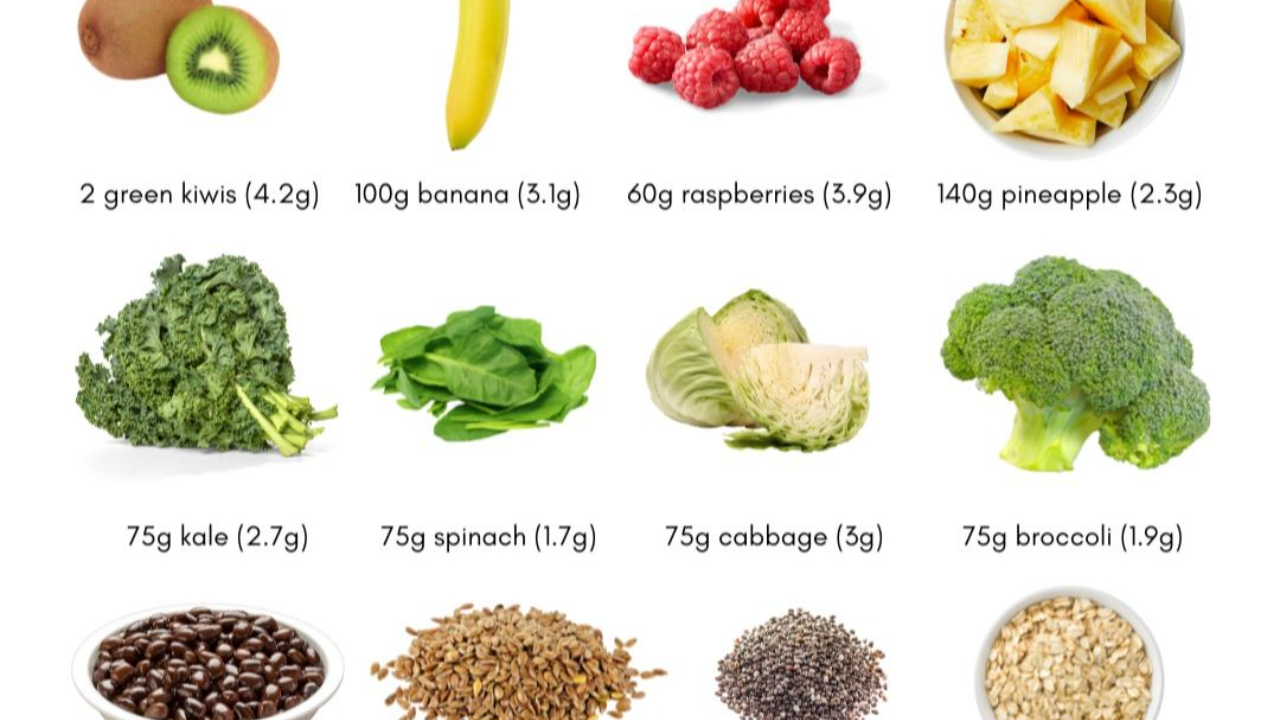Fibre & FODMAPs, What You Need to Know?
Sep 24, 2022
It is common to see dietitians talking about the importance of including fibre-rich foods into the diet. But what is fibre? Fibre is the non-digestible carbohydrate component of plant foods that is completely or partially fermented in the gut by bacteria. This means that fibre may pass through the stomach and bowel without changing much. The main types of dietary fibre are soluble, insoluble, and resistant starch. You can find out more about each type here.
While the consumption of high fibre foods may set off IBS symptoms, low consumption of fibre can also make gut symptoms such as bloating, abdominal pain and constipation worse. We know it can be hard to understand all the conflicting nutrition information. The purpose of this blog post is to ensure you are getting enough fibre whilst navigating the low FODMAP diet.
Why should I care about eating enough fibre?
Put simply, fibre keeps our gut bugs happy! Consuming a variety of high fibre foods can have many positive effects including softening hard stools, firming loose and bulking-up stools via increased bacterial numbers, short-chain fatty acid production and water retention. Daily fibre consumption can also help with blood glucose control, managing your hunger levels and cholesterol reduction.
Fibre and the low FODMAP diet
The low FODMAP diet is a tool used by many specialist dietitians to reduce the symptoms of IBS. The diet initially excludes foods with highly fermentable carbohydrates (FODMAP) for a short period (2-6 weeks) to identify individuals who are sensitive to FODMAPs and ease their symptoms. Unfortunately, getting the daily recommended amounts (25-35g) of fibre can be a challenge for people following the low FODMAP diet, as many fibre-rich foods are also high in FODMAPs.
The likelihood of meeting your daily fibre requirements increases by consuming a wide variety of plant-based foods including fruits, vegetables, grains, nuts and seeds. The table below contains low FODMAP foods and their fibre content to get you started:
Here is an example of a high fibre menu:
- Breakfast: Rolled oats with chia seeds, strawberries and maple syrup
- Morning tea: A low FODMAP piece of fruit (unripe banana, mandarin or orange)
- Lunch: Canned tuna, brown rice and low FODMAP vegetables (carrot, parsnip, Japanese pumpkin)
- Snack: 10 walnuts
- Dinner: Firm tofu with quinoa and Asian greens (choy sum, bok choy, snake beans)
Other things important to consider:
-
Increase fibre intake slowly to avoid flare-ups.
-
When increasing fibre, ensure you are increasing your fluid intake too.
-
Choose multigrain breads and cereals over refined products.
-
Consider adding in a fibre supplement if you think your dietary intake is suboptimal. Discuss which option is best for you with your doctor or dietitian.
Reference List:
1. Barber TM, Kabisch S, Pfeiffer AFH, Weickert MO. The Health Benefits of Dietary Fibre. Nutrients [Internet]. 2020 Oct 21;12(10). Available from: http://dx.doi.org/10.3390/nu12103209
2. Baker Institute. Dietary Fibre [Internet]. Available from: https://baker.edu.au/-/media/documents/fact-sheets/baker-institute-factsheet-dietary-fibre.pdf
3. About FODMAPs and IBS | Monash FODMAP - Monash Fodmap [Internet]. [cited 2022 Mar 18]. Available from: https://www.monashfodmap.com/about-fodmap-and-ibs/


